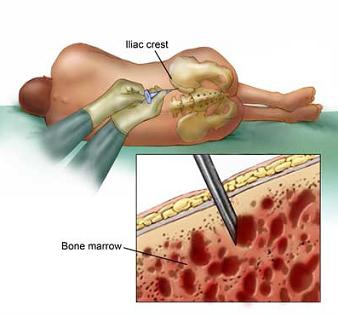Donating bone marrow is a great way to help someone in need, and can quite easily help to save a life. When asking if donating bone marrow hurt, it is important to consider that there are generally two ways of donating bone marrow. One method is achieved by extracting bone marrow from your pelvic region. The second method is known as PBSC (peripheral blood stem cell), which involves extracting stem cells from the blood. This article will explain how painful these procedures are, as well as detail what to expect when undergoing them.

Does Donating Bone Marrow Hurt?
Bone Marrow Extraction
When donating actual bone marrow (as apposed to PBSC), you will usually undergo a general anesthetic before the operation is carried out to minimize the pain you experience. This can leave one feeling sore in the area where the bone marrow was extracted from, but the operation itself involves no pain due to the general anesthetic. Donating actual bone marrow can cause you to experience feelings of tiredness and weakness, as well as an inability to walk properly. This will usually dissipate once a few days have passed. It is also common to feel a slight pain at the area where the bone marrow was extracted from.
The largest risk associated with this procedure lies within the use of this general anesthetic and the adverse effect it can have on your body. That being said, instances of such complications arising are extremely rare and most medical professionals are well equipped and well prepared to deal with it.
PBSC
In regards to PBSC donations, the risk level is extremely low. Doctors will often give you certain medication that works to increase the number of stem cells within your blood prior to your donation, which can have adverse side effects, similar to the symptoms associated with the flu. These will usually dissipate a few days after your donation.
As mentioned, for one to ascertain an answer to the question – does donating bone marrow hurt? You must first distinguish which procedure you are speaking of. PBSC donations involve far less chance of pain when compared to bone marrow donations. It is possible that you may experience some chills, light-headedness, cramping of the hands and/or a numbness or tingling sensation within the mouth. All of which should begin to dissipate immediately after your donation. The pain associated with PBSC is extremely minimal, it involves having a needle inserted into your arm to extract blood, and then having that blood put back into your body via a similar injection (once the stem cells have been removed for medical use). Many individuals who have undergone this treatment have stated that it is pretty much painless.
In most cases, donating stem cells is as easy as donating blood. If you believe it is something you want to do then you should be extremely proud of your decision, but also think hard about it. Understand that registering to donate bone marrow/stem cells is a big commitment. For those who will be receiving your donation in the operating theatre, it could be the deciding factor in the success of their procedure. So when asking – does donating bone marrow hurt? And when deciding if you want to donate, thinking of those that you will be helping may assist you in your decision making.
More Considerations to Take
Before you are able to donate bone marrow, you must first ascertain whether you are a suitable donor. There are numerous medical conditions that can revoke your eligibility of being a bone marrow donor if you are suffering from them. On all occasions, you will have to provide your medical history with your registration to ensure that you fit within the right criteria of health for your participation.
When donors are called upon from the registry to donate, one of the main things considered is age. The age group most sought after in regards to donors is 18-44. Those who fall within this age group are more likely to find recovery from the procedure much easier than those who are older. That's not to say those aged between 45 and 64 shouldn't register, but on most occasions when a donor is needed, those who fit into the former age group are usually preferred.
When asking – does donating bone marrow hurt? You may also wonder if it will hurt you wallet. Once you register you will have to make an appointment to test your eligibility via giving a blood sample to a medical professional. This can cost around $100, although that figure is reimbursed to anyone who is successful in registering.
If you are successful in registering and the occasion arises where you are a match for someone in need, then you will be contacted. You may have to undergo further tests, so ensure that you are prepared and available. The health care professional will detail all of this for you clearly.
View All Comments /Add Comment